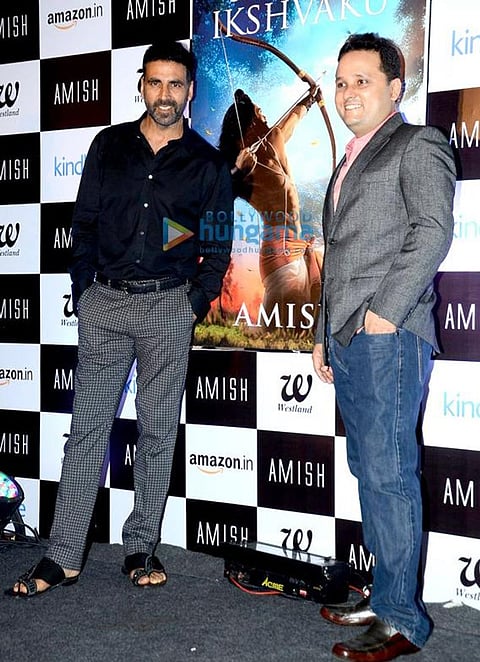
- Home
- न्यूजग्राम
- NewsGram USA
- India
- World
- Politics
- Entertainment
- Culture
- Lifestyle
- Economy
- Sports
- Sp. Coverage
- Misc.
- NewsGram Exclusive
- Jobs / Internships

NEW DELHI: After the First World War, the topic of nuclear research was very much into the discussion. Every country was trying their best to refine their knowledge about the nuclear program. Homi Jehangir Bhabha was one the first scientists from India who dived deep into this subject. Homi Bhabha stressed upon formulating a strategy to extract power from the country's vast thorium reserves rather than it's going out for uranium reserves. This observation of Homi Bhabha was very much contrary to many of the countries. But for India, it experiments thoroughly explained our scientists the importance of nuclear research and energy.
When World War II broke out in 1939, Homi Bhabha was in India for a yearly vacation. But, due to the outbreak of the war, he was able to leave India. While he was forced to stay in India, he was persuaded by C.V. Raman to become a reader in physics at the famous Indian Institute of Science located in Bengaluru. C.V. Raman was a Nobel Laureate in Physics.
Also Read: 10 must-know facts about Anand Mahindra
Out of curiosity, Homi Bhabha accepted the offer and started his work in Physics. During that very time, he came in direct contact with Congress Party and convinced the party leaders that India needs a nuclear program. One of the several Congress Leaders was Jawaharlal Nehru was who was convinced with what Bhabha had projected.
Homi Bhabha was very much against the use of nuclear power for the weapons production. Wikimedia Commons
In 1944, Homi Bhabha started a new unit in Indian Institute of Science and it was the much renowned Cosmic Ray Research Institute. In the same year, he conveyed his message to the trustees of Sir Dorabji Tata Trust for special facilities for working with cosmic rays; nuclear physics, high energy physics and other areas of physics. Homi Bhabha was successful in his endeavour and was granted financial help for establishing Tata Institute of Fundamental Research. Finally n 1945, the research facility was established at Royal Yacht Club's old buildings, Bombay. The Government of Bombay was also a co-sponsor of the Tata Institute of Fundamental Research.
Take a look at some of the facts related to Homi Bhabha.
1. Being a painter himself, Homi Bhabha was very much fascinated towards arts and culture. His this interest was accompanied by classical music and opera.
2. Homi Bhabha also worked with the great physicist, Niels Bohr and played a major role in the development of The Quantum Theory. He is been credited with identifying and naming the Meson Particle which was a significant mystery of that time.
3. In 1955, Homi Bhabha was elected as the 1st chairman of the first United Nations Conference on the Peaceful Uses of Atomic Energy.
4. Homi Bhabha was the founder and director of leading research institutions of India. One was Tata Institute of Fundamental Research and another one was Bhabha Atomic Research Centre
Homi Bhabha was awarded the Adams Prize in 1942 and a Padma Bhushan in 1954. Wikimedia Commons
5. Homi Bhabha was very much against the use of nuclear power for the weapons production and discouraged the nuclear armament. He advocated the utilization of atomic energy to alleviate poverty.
Also Read: 11 Must-Know Facts About Indian Air Force
6. Homi Bhabha researched with German Physicist Walter Heitler for the development of the Cascade Theory. This testing helped them to better understand cosmic radiation.
7. Homi Bhabha holds a graduate degree in mechanical engineering. After completing his studies, he started his research on the nuclear program.
8. Homi Bhabha was so much into his work and passion that he remained a bachelor throughout his life.
9. Homi Bhabha stayed in a sprawling colonial bungalow known as Mehrangir in Malabar Hills.
10. For his dedication and discoveries in the nuclear program, Homi Bhabha was awarded the Adams Prize in 1942 and a Padma Bhushan in 1954. Later, he was also honoured with Fellow of the Royal Society.
Homi Bhabha was the founder and director of leading research institutions of India. Wikimedia Commons
11. Homi Bhabha is known for Indian Nuclear Program, Cascade Process of Cosmic Radiations Point Particles, Habha Scattering and Theoretical Prediction of Muon.
12. Due to Homi Bhabha's contribution to India's nuclear program, he earned the title of 'Father of Indian Nuclear Programme'.
Homi Bhabha's death still remains one of the biggest mysteries in the history of India. As per official records, he passed away in an aeroplane crash in Switzerland on January 24, 1966. But as per various reports, Homi Bhabha was poisoned by CIA because America at that point was threatened by the advancements made by him and thus assassinated him by shooting his plane down.
